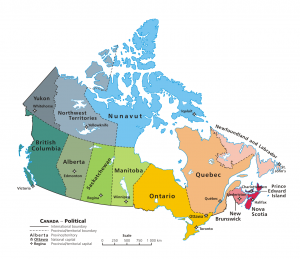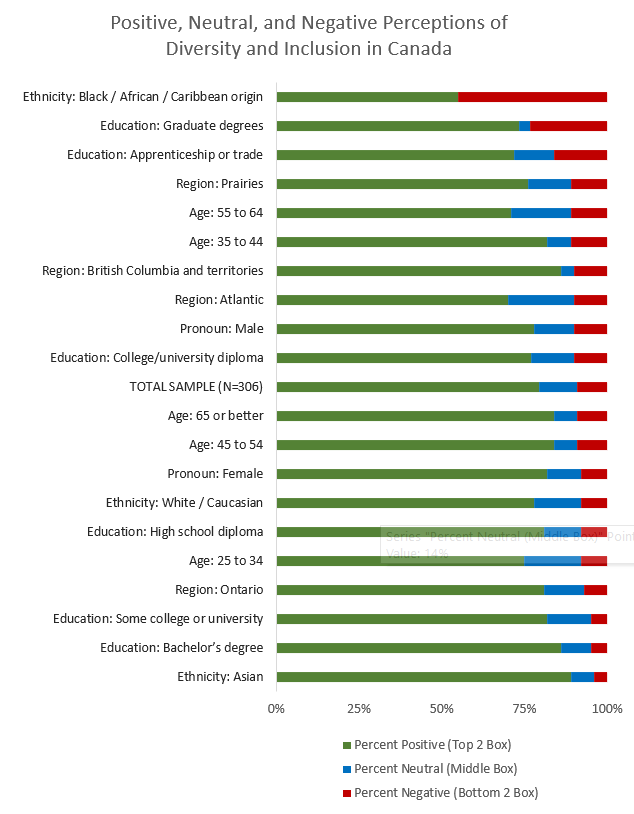When developing branding and packaging, designing tools and websites, or creating surveys, brands often prioritize functionality and aesthetics. However, accessibility is a critical component that should not be overlooked. According to Statistics Canada, as of 2022, approximately 27% of Canadians aged 15 and over have at least one disability, equating to about 8.0 million people. This is an increase from 22% in 2017. In the United States, around 27% of adults have some form of disability (Pew Research Center, CDC). This significant demographic not only deserves equal access but also represents a substantial market opportunity. Disabilities encompass a range of challenges such as mobility, cognition, independent living, hearing, vision, and self-care difficulties.
These eye-opening statistics underscore the critical need for accessibility and thoughtful design measures in every product and service. When approximately 1 in 4 people may be unable to experience your product due to accessibility barriers, it can significantly impact your market reach and sales potential.
Why Accessible Packaging Matters
Accessible packaging is not just a matter of convenience; it is a matter of inclusivity and equal access. Ensuring that your products are accessible to people across the full spectrum of abilities ensures that you can fully engage with your customer base. Accessibility in product design benefits society, including the aging population who may experience reduced dexterity, vision, or cognitive abilities. As the global population continues to age, the need for accessible packaging becomes even more significant.
Strategies for Designing Inclusive Products
To be considered truly accessible, products (packages, websites, surveys, forms, etc.) must be designed to assist users with various impairments. Here are some strategies for creating inclusive designs:
- Design for All Abilities:
- Websites and surveys should accommodate hearing- or sight-impaired users by including features such as audio descriptions and screen reader compatibility.
- Surveys should follow the Web Content Accessibility Guidelines (WCAG) in terms of colour to ensure readability and accessibility.
Ensuring Accessible Surveys at Canadian Viewpoint
At Canadian Viewpoint, we are committed to ensuring our surveys are accessible to everyone. We comply with the Accessibility for Ontarians with Disabilities Act (AODA) by meeting or exceeding WCAG 2.0 Level AA standards and aiming for WCAG 2.1 compliance.
All our online surveys are WCAG 2.1 compliant. Developed by the World Wide Web Consortium (W3C), this standard is globally accepted for creating accessible, AODA-compliant web pages.
Our platform incorporates several compliant elements to ensure accessibility from a survey perspective. For instance, our survey questions are generally set up to be user-friendly for individuals with disabilities, including those who use screen readers. This applies to both basic and advanced question types.
Additionally, we have the capability to run the server through a WCAG Compliance Checker as an extra step. Not only does this tool examine the underlying setup of a page, including hidden elements that a screen reader might read (not visible to the naked eye), but it also provides feedback on compliance with potential remediation step.
By adhering to these standards and practices, we ensure our surveys are accessible to all users, enhancing data quality and inclusivity.
- User Testing:
When seeking opinions from your target audience or aiming to find new audiences, use online surveys to reach a wide geographic area. Additionally, employing telephone/Computer-Assisted Telephone Interviewing (CATI), methods can help access a diverse geographic range. If accessibility or availability at central locations is challenging, consider using IN-HOME USAGE TEST (IHUT) to send products directly to people’s homes.
Products must be tested with all potential users, not just those who are conveniently available. Include individuals with vision, hearing, motor, and cognitive impairments in your in-home usage tests (IHUT), product tests, and package tests to ensure the design meets diverse needs. Individuals with disabilities may find it more comfortable and accessible to participate in research from home.
By incorporating these practices, you can create more inclusive and accessible products and surveys, ultimately reaching a broader audience and gaining a better understanding of a representative population. This approach not only enhances user experience but also ensures that your research and products reflect the diverse needs and preferences of all users.
- Enhancing Accessibility through User Behavior Analysis
Understanding how users engage with your products is essential for enhancing accessibility. By examining user behavior, businesses can identify areas for improvement, refine the user experience, and make informed, data-driven decisions. This process helps uncover usability issues, streamline navigation, and confirm design choices, resulting in a more intuitive and accessible digital experience.
Leveraging tools like eye tracking with heatmap outputs can uncover deep insights. These tools uncover subconscious behaviors and offer unbiased data, enabling companies to study consumer decision-making processes as they test or select products from a multitude of options. This comprehensive analysis supports businesses in tailoring their products to better align with user needs and preferences, ultimately enhancing customer satisfaction and loyalty.
By incorporating these advanced tools and methodologies, businesses can ensure their products are not only functional and aesthetically pleasing but also accessible and user-friendly for all individuals, including those with disabilities.
- Clear and Legible Information:
Ensure all text on packaging, including labels and instructions, is clear and easy to read. Use simple and concise language to enhance understanding, especially for individuals with cognitive disabilities.
- Easy Opening and Closing Mechanisms:
Design packaging with features that accommodate individuals with limited dexterity or hand strength. Incorporate easy-to-use mechanisms such as tear strips, pull rings, and tabs for effortless gripping. Focus on creating products that people can use independently, without needing assistance from others or requiring additional tools or devices. This approach ensures inclusivity and enhances the overall user experience.
- Tactile and Visual Cues:
Include tactile and visual cues on packaging to assist individuals with visual impairments or cognitive disabilities in identifying products. Consider incorporating Braille or other tactile writing systems.
- Ergonomic Design:
Ensure that packaging is ergonomically designed to be easy to handle and carry, especially for individuals with physical disabilities or limited mobility.
The Benefits of Accessibility in Market Research
Embracing accessibility in market research offers numerous benefits:
- Wider Reach: Accessible products and surveys engage a broader audience, leading to more comprehensive data and better-informed business decisions.
- Enhanced Brand Reputation: Demonstrating a commitment to accessibility reflects positively on your brand, fostering loyalty and positive word-of-mouth.
- Improved Data Quality: Inclusive surveys and product tests provide insights from a diverse range of users, resulting in higher-quality data.
- Legal Compliance: Adhering to accessibility laws and guidelines protects your brand from potential legal issues and positions you as a responsible and ethical company.
Prioritizing accessibility in market research and product design is not just a legal obligation but a strategic move that can enhance brand growth and customer satisfaction. By designing for inclusivity, brands can ensure that their products are accessible to all, thereby unlocking new market opportunities and driving long-term success.
By incorporating these strategies, you can create products and surveys that are accessible to a wider audience, ensuring that your brand remains competitive and inclusive in today’s market.
Take the first step to ensure your products and surveys are accessible and inclusive by contacting us today! Canadian Viewpoint is well-equipped to recruit participants for your next In-Home Usage Test (IHUT). Comprehensive and actionable feedback awaits




